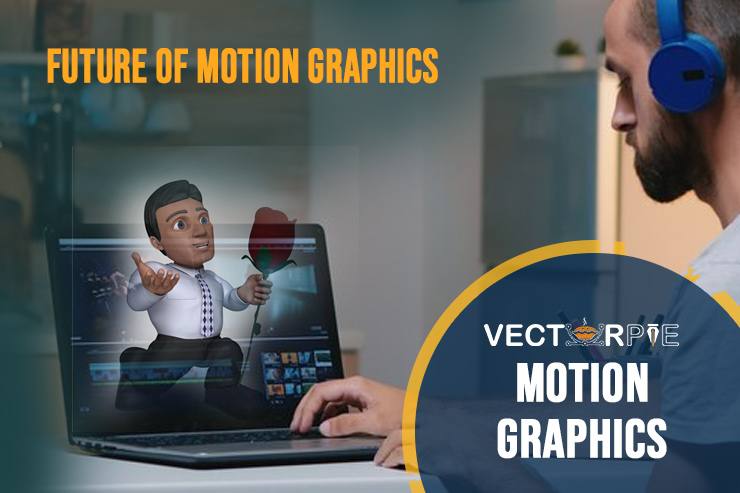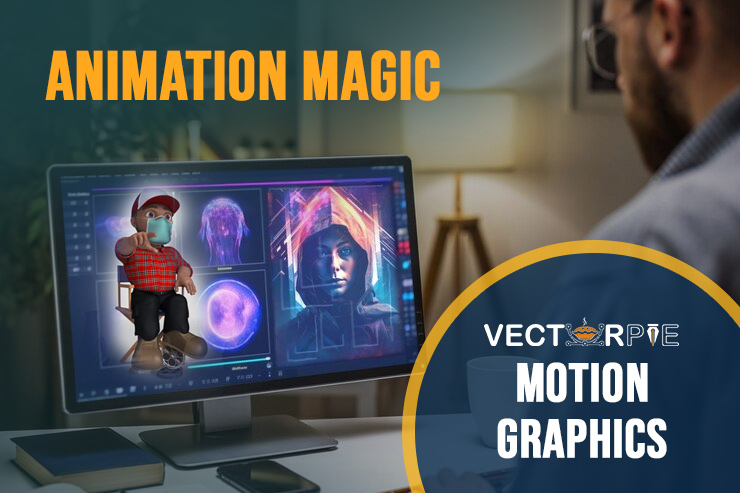Animation has a unique ability to captivate audiences, tell stories, and bring imagination to life. Within the realm of animation, one fascinating aspect that stands out is Motion Graphics. Often described as the art of bringing graphic design to life through movement, Motion Graphics combine visual elements, typography, and audio to create engaging and dynamic pieces of animation.
In this article, we’ll delve into the mesmerizing world of Motion Graphic, exploring its origins, techniques, applications, and the magic it brings to various industries. Whether you’re an animation enthusiast, a budding designer, or simply curious about the art form, join us as we unveil the wonders of Animation Magic.
The Origins of Motion Graphics
The roots of Motion Graphic can be traced back to the early 20th century with the advent of experimental films and avant-garde artists. Visionaries such as Oskar Fischinger and Len Lye explored the possibilities of animated abstract shapes and patterns set to music, laying the foundation for what would later become Motion Graphics.
As technology advanced, Motion Graphic found its place in the advertising industry during the mid-20th century. Television commercials began to incorporate animated elements to convey messages and captivate viewers. This marked the beginning of Motion Graphics as a powerful tool for visual storytelling and communication.
Techniques and Tools of the Trade
Today, Motion Graphic artists harness a variety of techniques and tools to create stunning animated sequences. From traditional hand-drawn animation to cutting-edge digital software, the possibilities are endless.
- Typography Animation: Motion Graphic often involves the manipulation of text, known as typography animation. Letters, words, and sentences come to life through movement, enhancing the impact of the message.
- Vector Graphic: Vector-based graphics provide scalability and flexibility in Motion Graphic. Artists can create smooth, crisp animations that retain their quality across different screen sizes.
- 3D Animation: For added depth and realism, Motion Graphic artists employ 3D animation techniques to create immersive visual experiences.
Applications Across Industries
The versatility of Motion Graphics makes it a valuable asset across a wide range of industries:
- Film and Television: Opening titles, credits sequences, and visual effects in movies and TV shows often rely on Motion Graphics to set the tone and enhance storytelling.
- Corporate Presentations: Businesses utilize Motion Graphic to create engaging presentations, training videos, and corporate branding materials.
- Educational Content: Motion Graphics are used in educational videos, e-learning courses, and tutorials to explain complex concepts in a visually appealing manner.
- Gaming and Interactive Media: Video games incorporate Motion Graphics for user interfaces, in-game animations, and immersive storytelling elements.
The Magic of Motion Graphics
What sets Motion Graphic apart is its ability to evoke emotion, convey information, and transport viewers to new worlds. Here are some aspects of the magic it brings:
- Visual Storytelling: Motion Graphic allow artists to tell stories through visuals, using movement, color, and composition to create compelling narratives.
- Engagement and Interactivity: In the digital age, Motion Graphics play a crucial role in engaging audiences online. Interactive elements and animated infographics make content more dynamic and shareable.
- Accessibility: Motion Graphic break down language barriers, making information accessible to diverse audiences through universal visual cues and symbols.
The Future of Motion Graphics

As technology continues to advance, the future of Motion Graphic holds endless possibilities. Here are some trends and developments to watch out for:
- Data Visualization: Motion Graphics are increasingly used to visualize complex data sets, making statistics and information more digestible and engaging.
- Real-time Animation: With the rise of real-time rendering engines, artists can create animations that respond instantly to user input, opening up new avenues for interactive media.
Conclusion
Animation Magic truly comes to life through the captivating art of Motion Graphic. From its humble beginnings in experimental films to its role as a powerful communication tool in modern industries, Motion Graphic continue to dazzle and inspire.
As we unravel the world of Motion Graphic, we uncover a realm where creativity knows no bounds. Whether used to tell stories, convey messages, or create immersive experiences, Motion Graphics hold the power to mesmerize, inform, and engage audiences around the globe.
